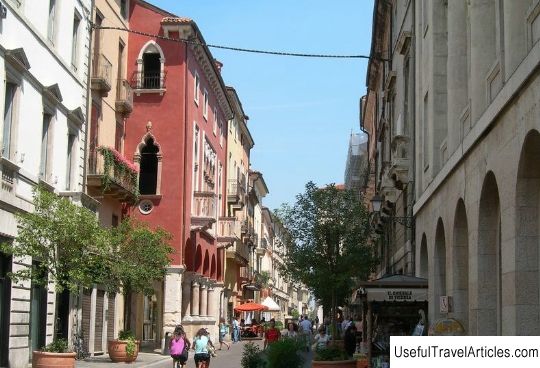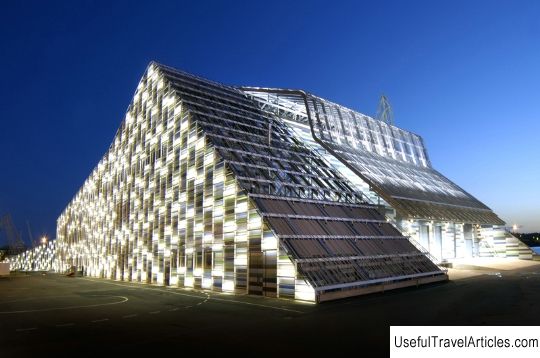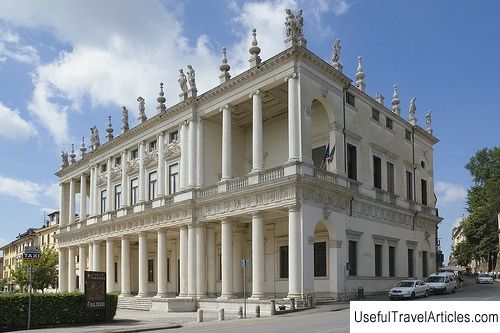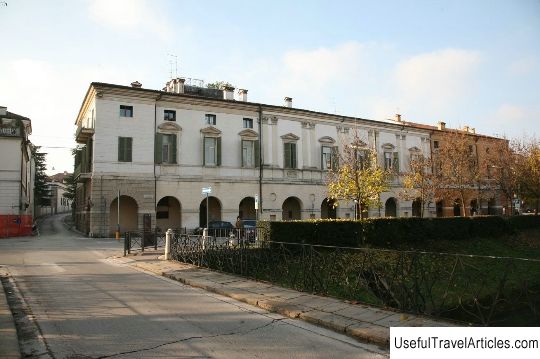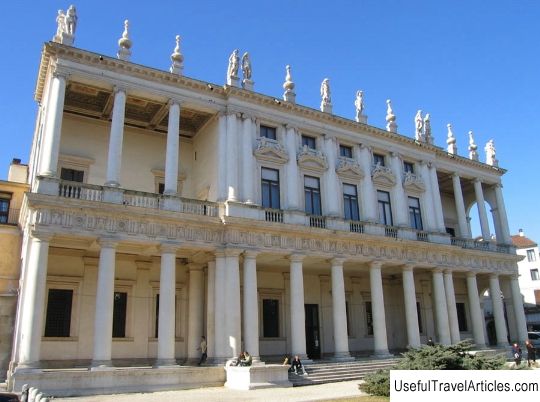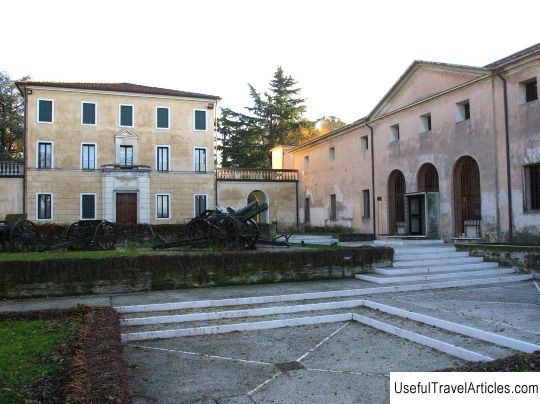Historical center of Vicenza (Centro storico di Vicenza) description and photos - Italy: Vicenza
Rating: 8,1/10 (9302 votes) Historical center of Vicenza (Centro storico di Vicenza) description and photos - Italy: Vicenza. Detailed information about the attraction. Description, photographs and a map showing the nearest significant objects. The title in English is Centro storico di Vicenza. Photo and descriptionThe historic center of Vicenza, surrounded by medieval walls, which were built during the reign of the Della Scala family, is small in size. Tourists usually get acquainted with it during hiking, during which you can see with your own eyes old houses, palaces, monuments, picturesque courtyards, narrow streets with their squares, squares and picturesque shops. One of the routes in the historic center of Vicenza starts from Piazza Matteotti, formerly known as Piazza del Isola. Once the Bacchiglione River flowed right in front of Palazzo Chiericati - in the past, this place was the city's port, where ships loaded with wood arrived. A vegetable garden lies behind the Palazzo building, which makes it a transitional form between the palace itself and the villa. Palazzo Chiericati is considered one of the masterpieces of the great architect Andrea Palladio. Since 1855, it houses the City Museum and Art Gallery. A little further, a 17th century portal attributed to Revese leads to the courtyard and garden of the Olympic Theater, which was started by Palladio and completed by Vincenzo Scamozzi. Today the theater leaves the feeling of a mystical place, and its wooden decorations amaze the imagination. Proceeding further along the Corso Palladio street, which was once called the most elegant in Europe, behind a small building that according to legend was the home of Palladio, you can see the Gothic Temple of Santa Corona. Inside are works by Bellini and Veronese and Fogolino's mesmerizing view of Vicenza. The main throne, inlaid with marble and pearls, the wooden choir and the Chapel of Valmarana are also worth a look. To the right of the church is the covered gallery of Santa Corona, which now houses the Museum of Natural History, and on the corner of Contra Apolloni stands Palazzo Leoni Montanari, a masterpiece of Vicenza's Baroque art. Since 1909, it has been owned by the Catholic Bank and is an exhibition hall for 14 paintings by Pietro Longhi. There, on Corso Palladio, is the Church of San Gaetano Thiene and immediately behind it - Palazzo Schio, known as Ca 'd'Oro, an excellent example of Gothic architecture. Then the route leads to Piazza dei Signori, which has been the center of the city since the time of the Vicenza commune. On the south side of the square, there is an amazing snow-white building - the Basilica of Palladian, the symbol of Vicenza. Nearby stands the 82-meter Torre Bissara tower, on which the first mechanical clocks appeared in the 14th century. On the other side of the square, you can see the Loggia del Capano, an unfinished work of Palladio that today houses the City Council. Behind the Loggia is the 16th-century Palazzo del Monte di Pieta with the graceful church of San Vincenzo. The charm of the square is complemented by two elegant columns - Christ the Redeemer and St. Mark. Behind the columns, in Piazza Biade, is the Church of Santa Maria dei Servi, and on the right, in Piazza delle Erbe, is the Torre Tormento tower, which was once a prison. At the end of the square, on a narrow street, stands a Gothic building with marble lace - the house of Antonio Pigafetta, a participant in Magellan's circumnavigation of the world. Also, in the historic center of Vicenza, it is worth visiting the Palazzo Trissino Baston, now occupied by the City Hall, Palazzo Zigliieri Dal Verme, Palazzo Bonin Longare, the Porta Castello tower - the oldest surviving from the Middle Ages, and the Palazzo Porto Breganze. Behind Porto Castello is the Salvi Garden. And if you go from the park along Corso San Felice e San Fortunato, you can come to the basilica with the same name, built in the early Christian period.          We also recommend reading Church of Santa Maria (Iglesia de Santa Maria) description and photos - Spain: Blanes Topic: Historical center of Vicenza (Centro storico di Vicenza) description and photos - Italy: Vicenza. |
